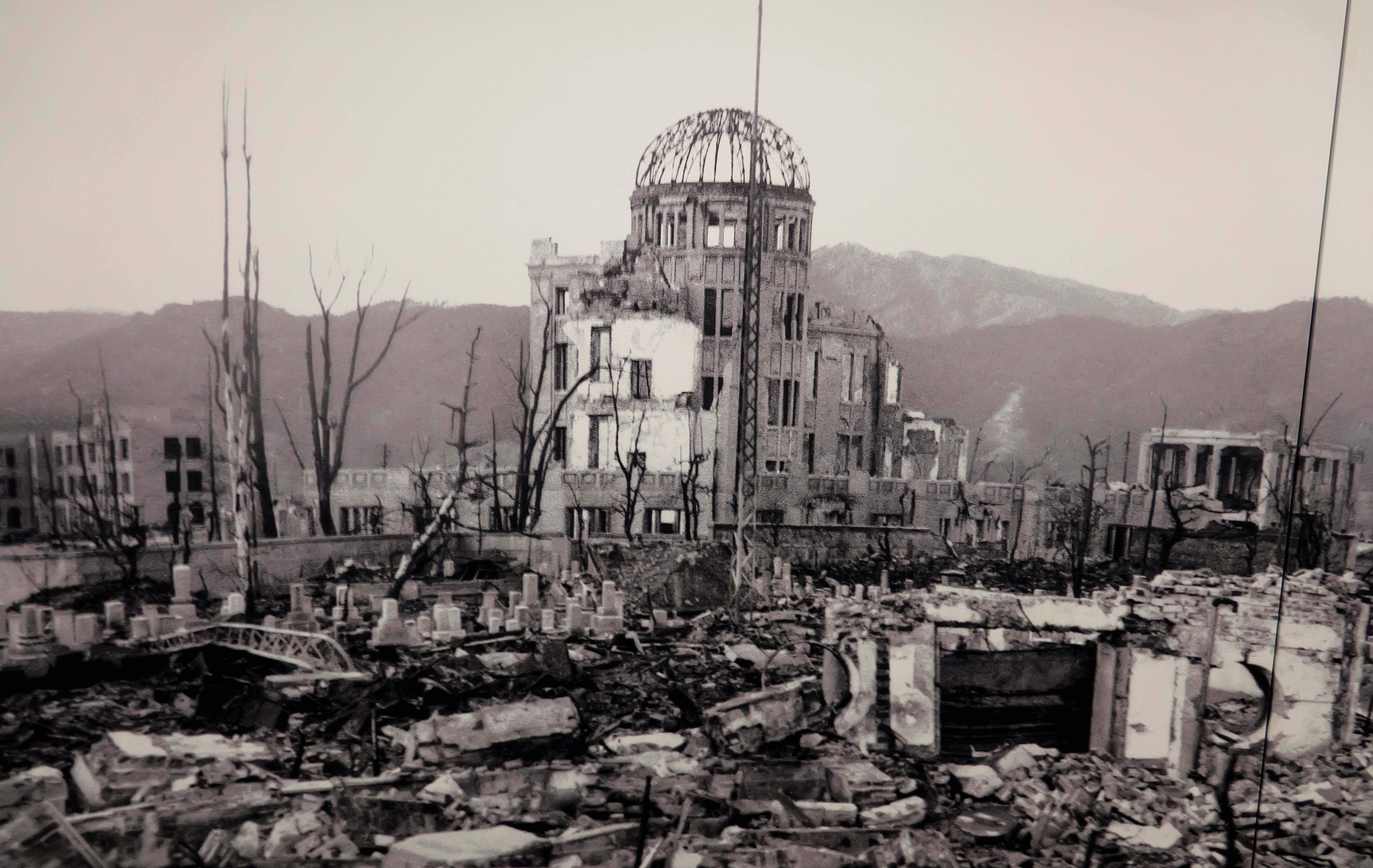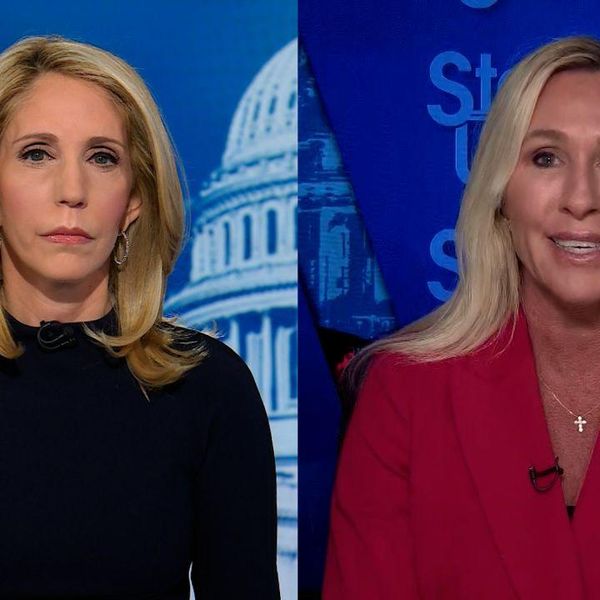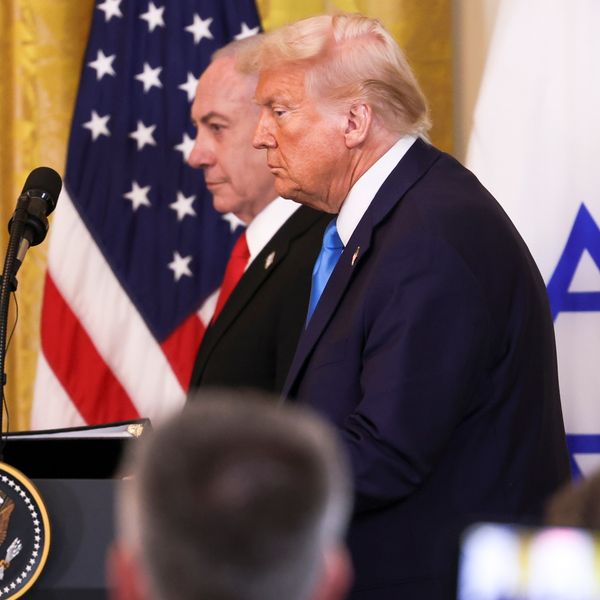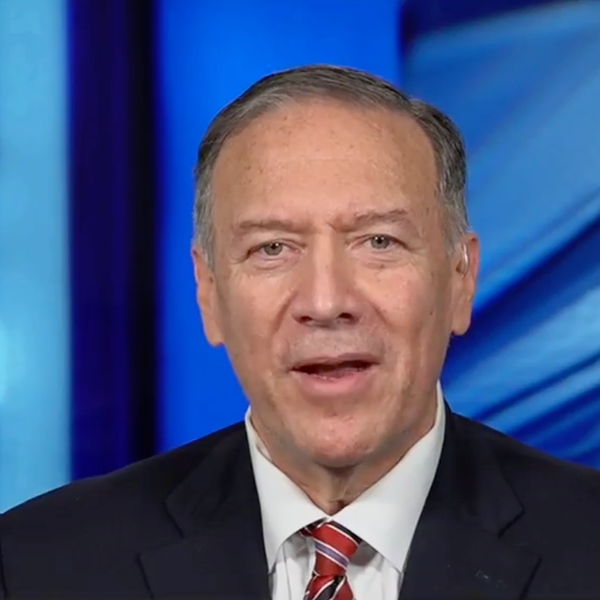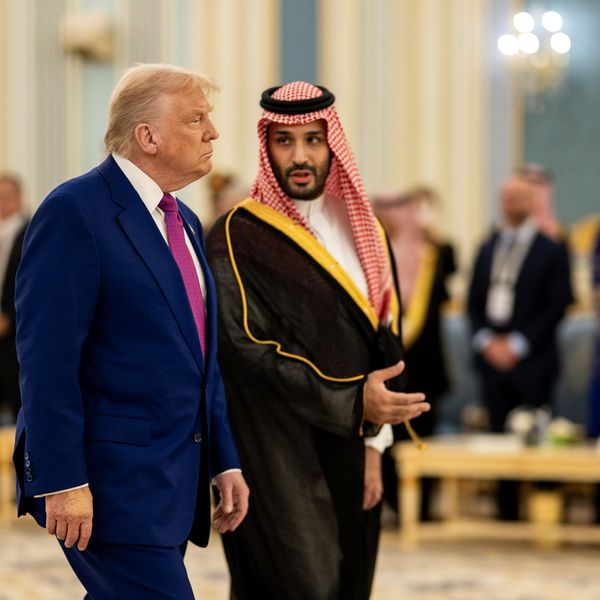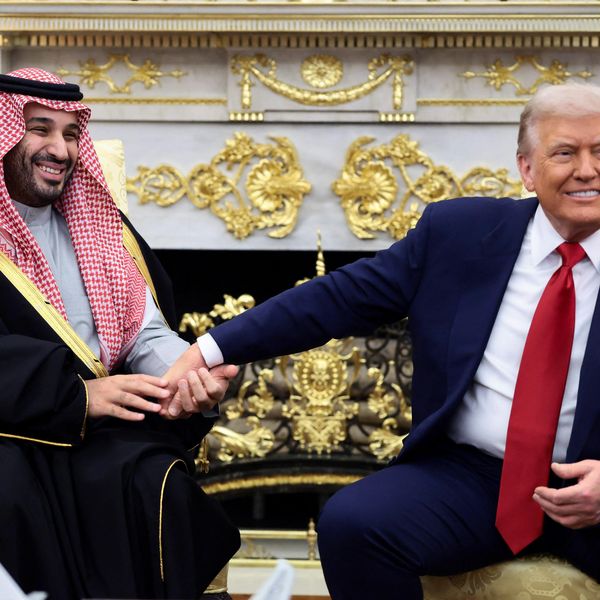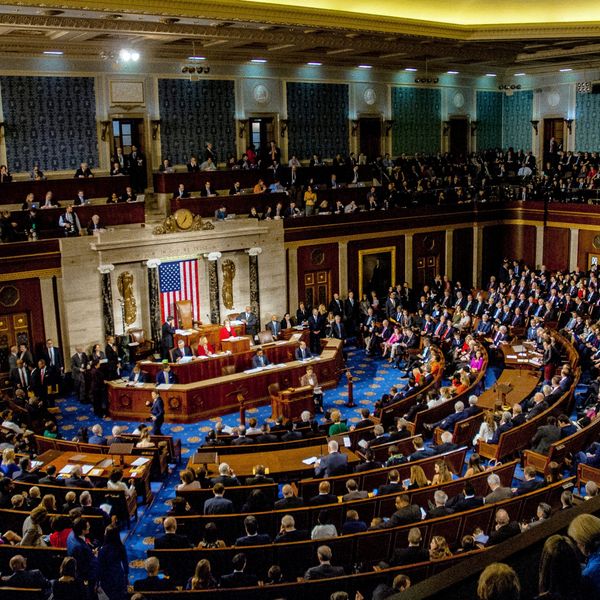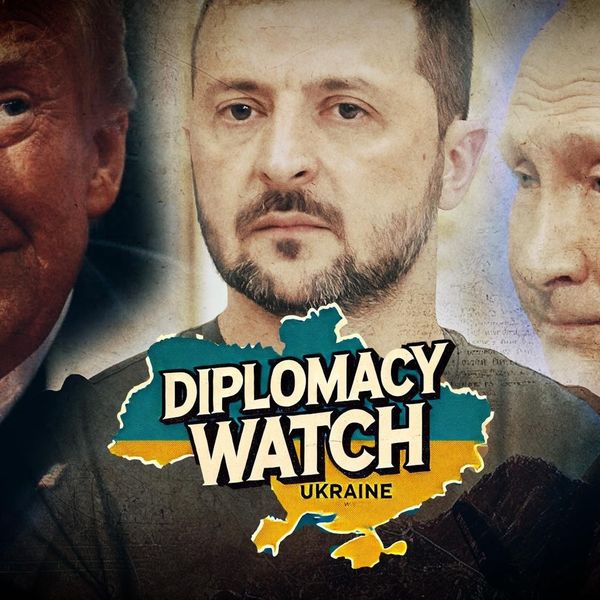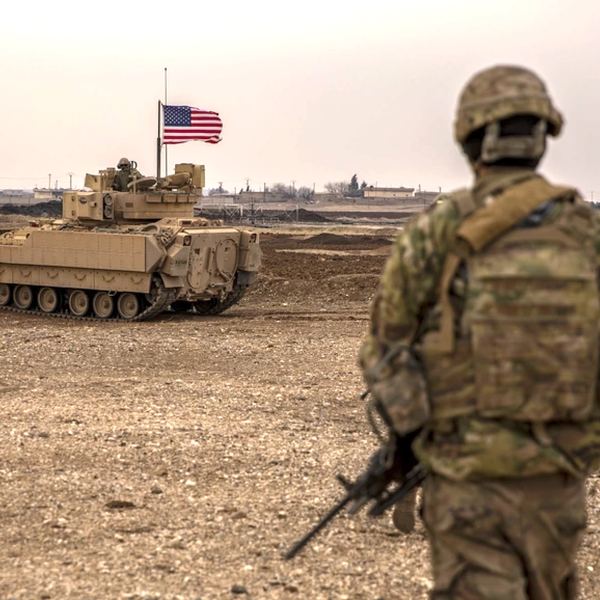Eighty years ago today, August 6, 1945, the U.S. military dropped an atomic weapon nicknamed “Little Boy” on the city Hiroshima, Japan, resulting in a blast equivalent of 15 kilotons of TNT, killing approximately 66,000 people immediately and some 100,000 more, the vast majority civilians, by the end of 1945.
Three days later, the U.S. deployed another nuclear bomb — this one “Fat Man” — on the Japanese city of Nagasaki, leaving upwards of 80,000 people dead by the end of the year.
Japan surrendered in September, bringing a victory to the Allies in the Pacific theater and an end to World War II.
In the 80 years since, nine countries have acquired nuclear weapons arsenals, according to the American Federation of Scientists, which counts some 12,331 warheads (9,600 active) total. Russia and the U.S. have the most, with 5,449 and 5,277 respectively, as of 2023.
Despite fears to the contrary, no nuclear weapon has been used in conflict since Little Boy and Fat Man flattened two Japanese cities 80 years ago this week. This, despite a Cold War spanning decades between the world’s two great powers of the time, the United States and Soviet Union.
What primary lesson should we take away from this fact in our geopolitical history?
Does this mean nuclear deterrence among great powers actually works?
We asked a broad mix of historians, political scientists, anti-nuclear weapons activists and journalists this question, particularly as it relates to heightened fears of Great Power conflict and what appears to be a new era of nuclear proliferation today.
***
Andy Bacevich; James Carden; Brandan Carr; Emma Claire Foley; John Allen Gay; Lyle Goldstein; William Hartung; Stephen Kinzer; Cynthia Lazaroff; Dan McCarthy; Rajan Menon; Christopher Preble; Steve Simon; Susi Snyder; Marcus Stanley; Michael Swaine; Jake Werner
***
Andy Bacevich, co-founder and Emeritus Board Chair of the Quincy Institute.
Nuclear deterrence assumes rationality. It requires all parties possessing the "ultimate weapon" to recognize that they share a common interest in their continuing non-use. Just to take the American case, can we be certain today that decisions in Washington derive from a rational calculation of interests and the likely implications of action? Or do impulses, ideology, grudges, and the need to settle scores shape behavior?
For all of its flaws, the old (and now justly discredited) foreign policy "establishment" demonstrated a reassuring level of prudence on nuclear matters — at least it did after the Cuban Missile Crisis scared the wits out of everyone.
In retrospect, we can see that the October 1962 brush with Armageddon had a useful educational effect, especially in Washington and Moscow. Whether Donald Trump and his crew endorse or even understand the resulting lessons remains to be seen.
James Carden, editor of the Realist Review
Myths are the lifeblood of the national security establishment. And no myth remains more entrenched after 80 years than the efficacy of nuclear weapons. After all, many argue that President Truman’s decision to use them ended the war — except it didn’t.
Japan had been looking to surrender long before August 6, 1945. The war would have been won, says the U.S. Strategic Bombing Survey, by November 1st at the latest — even in the absence of an American invasion of the home islands.
Another myth is that nuclear deterrence “works” — well, until it doesn’t. What about the deterrence of conventional attacks? I was in Manhattan 25 years ago when the planes flew into the World Trade Center. Russia, possessor of the largest strategic and tactical nuclear arsenals, has found its weapons have not deterred attacks on its military bases and infrastructure. Nuclear-armed Israel sustained an attack on its own soil in October of 2023. Nuclear weapons pose an unacceptably large threat to the human environment, to global security, and to civilization itself. Let us be done with them.
Brandon Carr, studies associate at the Quincy Institute
The bombings of Hiroshima and Nagasaki ushered in the nuclear age, ending a conflict that, fundamentally, relied on the grinding, attritional destruction of armies at mass scale.
Perhaps the most notable feature of the nuclear age — aside from the avoidance of military nuclear use — is the absence of another conventional great power war. Indeed, the Second World War’s end resulted in a power vacuum that was soon filled by the fierce bipolar competition between the United States and Soviet Union that, like the war that preceded it, was global in scope.
At numerous points during the Cold War and after, the world came exceedingly close to nuclear use that was avoided only by the collective skin of humanity’s teeth. Though the existence of nuclear weapons has not negated the sources of security competition, it has, at times, moderated it — furnishing a “ceiling,” of sorts, for escalation. The war in Ukraine is a clear example of this; throughout the war, but especially at the beginning, decisionmakers in Russia and the United States have plainly been aware of the risks and consequences of nuclear escalation and have worked assiduously to avoid that possible outcome. Whether that means nuclear deterrence is “working” (and will last) is not totally clear; it is a question with an answer that can change at any time. On the whole, however, it is difficult to argue that the existence of nuclear weapons is not a — or the — primary variable that has driven this relative peace between the great powers for nearly 80 years. It is a peace not without flaws but is nonetheless superior to those that came before it.
Emma Claire Foley, nuclear issues campaign director at Roots Action
My academic training, and my more general experience as a person who wants to understand the world, tells me that isolating and asserting specific causes and effects in a situation of infinite contingency — human life on Earth over an 80-year period — is junk thinking. Yet just this proposition, that eight decades with no nuclear war has proven that these weapons are a source of stability, not a profound liability, is constantly brought up as a justification for what appears to be a strong bipartisan consensus in the United States that nuclear weapons should exist into an indefinite future, and they should make us feel more, not less, safe.
A consideration of this question shaped by intellectual integrity and a serious consideration of the stakes of the question would instead acknowledge what we as a country and a world actually stand to lose should this ongoing case study we are all living through show that a world where nuclear weapons exist and countries are willing to use them will in fact experience nuclear war more often than one where they do not exist. Eighty years, by the standards of recorded human history and our much longer tenure on Earth as a species, is not very much time at all.
John Allen Gay, executive director of the John Quincy Adams Society
Nuclear deterrence has worked so far. We cannot know the odds of nuclear war; presumably they are small but not zero. We do know the costs of nuclear war: disaster. A small but nonzero risk of disaster merits our full attention.
So how do we reduce that risk? Many in the nuclear policy space do vital work on questions of nuclear force posture and nuclear doctrine. Yet this is not only a task for atomic wonks. Grand strategy shapes nuclear risk, too. Adding new allies means expanding the number of places we're willing to risk nuclear war. Keeping current alliances means accepting nuclear risks in those alliances. Entering confrontations, military or political, with other nuclear powers means increasing nuclear risk with those enemies. If nuclear risks turn into nuclear war, our posterity may rue our thoughtless commitments — if, that is, we have posterity at all.
Lyle Goldstein, Director of the Asia Program, Defense Priorities
Yes, nuclear weapons have helped to stabilize great power relations in the modern world. Now, the possibility of great power conflict is almost unimaginable. The Russia-Ukraine War stands as a clear example of this quite novel phenomenon. In the absence of nuclear weapons, the U.S. likely would have intervened directly. Nevertheless, all is not well. There are several dangerous tendencies extant in today’s world. Ideology, militarism, and the illusive search for “strategic superiority” all play a role in undermining peaceful relations among the great powers.
However, the biggest single problem with realizing “nuclear peace” is the failure of many foreign policy experts to accept the basic principle of “spheres of influence,” and how this natural principle of world politics accords with major nuclear arsenals. In other words, if Washington would simply accept that other major nuclear powers have their own sacrosanct spheres, global tensions, including nuclear tensions, would radically diminish.
William Hartung, senior research fellow at the Quincy Institute
The idea that the possession of nuclear weapons by major powers has kept the peace over the past 80 years is comforting. It is also dead wrong. Nuclear arsenals may have reduced the prospect of direct conflict among major powers, but they have also served as a shield allowing those same powers to intervene in the global south and on their own borders with near impunity.
Even more concerning is the fact that nuclear arms boosters are moving to define “deterrence” in the most aggressive terms possible.
Minimum deterrence, in which nuclear-armed powers maintain the smallest arsenals needed to dissuade an adversary from attacking them, is one thing. Building a new generation of nuclear weapons and rolling back measures to reduce nuclear risk in the name of deterrence is another. The only way we will absolutely be safe from a nuclear exchange is to get rid of these weapons altogether. In the meantime we should move towards the smallest possible arsenals consistent with deterrence and structure them to minimize the risk of an accidental launch or miscommunication.
Stephen Kinzer, senior fellow at the Watson Institute for International and Public Affairs at Brown University
After India successfully tested nuclear weapons in 1998, the New York Times sent me to Pakistan to await its response. Less than two weeks later, Pakistan carried out its own nuclear test. Many Pakistanis I met asked the obvious question: “Why not us?”
Today that question is being asked in more than a few countries. Middle powers see nuclear weapons the way superpowers saw them in the Cold War — as deterrents. By bombing Iraq, Libya, and recently Iran while leaving North Korea alone, the United States has sent a clear message: nuclear weapons keep you safe, not having them makes you vulnerable.
The modern practice of geopolitics makes nuclear proliferation inevitable. We should face it the same way we should face climate change: by preparing to adapt to a new world, not by pretending it’s not coming.
Cynthia Lazaroff, founder of Women Transforming Our Nuclear Legacy and NuclearWakeUpCall.Earth
As we commemorate the 80th anniversary of the atomic bombings of Hiroshima and Nagasaki, it’s time to dispel the myth that we can count on deterrence to prevent nuclear war. The concept that nuclear powers will be deterred from starting a nuclear war because of the threat of retaliation and mutual annihilation is fundamentally flawed.
Ignoring millennia of human behavior, deterrence rests on the naive assumption that leaders will act rationally and resist the temptation to push the button first,100% of the time, even in peak crisis moments and the fog of war. Deterrence fails to address the risks of unintended escalation and accidental nuclear war including blunder, miscalculation, mistake, and false alarm. We have already had many false alarms and narrowly escaped Armageddon. The only way to avert nuclear war is to eliminate nuclear weapons before they eliminate us. The landmark Nuclear Ban Treaty offers an inspiring pathway forward.
Dan McCarthy, editor of Modern Age: A Conservative Review
Nuclear deterrence works not only for great powers but for any country that possesses nuclear weapons. In a world without the bomb, the United States and Soviet Union would very likely have fought a conventional war in Europe sometime in the late 20th century, and today NATO would be directly at war with Russia. There would probably have been a second Korean War, too. On the other hand, “weapons of mass destruction” wouldn’t have served so well as a rationale for the Iraq War, and this year’s Iran crisis wouldn't have been the same, if it had happened at all.
If more states had nuclear weapons, would fewer wars be possible — or would the risk of these weapons being used again only rise? If war became more difficult to wage openly, would this lead to more state sponsorship of terrorism instead? The answer to all of these questions is simply “yes.”
Rajan Menon, Spitzer Professor of International Relations Emeritus at the City College of New York
Nuclear weapons haven’t been used in wartime since the American bombing of Hiroshima and Nagasaki in August 1945, which killed 110,000-210,000 people within three days. That’s no small matter, considering that there are now nine nuclear-armed states and an estimated 12,241 warheads, including those not deployed on missiles or aircraft (nearly 90% belong to the U.S. and Russia). Nuclear-armed states have traded gunfire and even fought brief wars recently (India and China, India and Pakistan), but those clashes didn’t careen into nuclear war.
Has the world escaped nuclear war for eight decades because deterrence works? Or is that due to sheer luck? Regardless, can the long streak continue indefinitely? There will be no shortage of opinions on these questions — but none that rest on hard facts. Moreover, though many measures are in place to prevent nuclear war, and more are feasible, none are foolproof.
Christopher Preble, senior fellow and director of the Stimson Center’s Reimagining U.S. Grand Strategy Program
If you had said to the scientists at Los Alamos, or to President Harry Truman, or his Secretary of War Henry Stimson, that we would make it 80 years without nuclear weapons having been detonated as an act of war, I think they would have been pleasantly surprised.
It's not accurate to say, however, that nuclear weapons have not been used since August 9, 1945. They have been brandished, much in the way that a handgun is used in a stick up. Some people claim that threats to use nuclear weapons have allowed certain states to achieve their objectives without resorting to war.
But just because we have avoided a nuclear war doesn’t mean we will in the future. We should strive, therefore, to understand the core elements of deterrence, and avoid purchasing more weapons than we need to keep our current streak going.
Steve Simon, senior research fellow at the Quincy Institute
Max Hastings' “Retribution,” a history of the last year of the war in the Pacific, argues that Japan’s conduct of the war biased U.S. decision making toward use of the bombs.
Also with only a couple of weapons, reluctance to use one for demonstration purposes was to be expected. Despite evidence that some Japanese were noodling about surrender, the fact was that they didn’t actually do so. After 3-and-a-half years of war, and the costs inflicted by the Japanese on Iwo Jima, Okinawa, and Saipan, one could well understand why Truman decided to use the bomb. And it did end the war.
It’s easy to conceive of alternative endgames. The U.S. could simply have starved the Japanese into submission, continued to incinerate them in strategic fire bombing campaigns, let the Russians have a go, or take the risk that even in the absence of formal surrender, a U.S. invasion would be unopposed and bloodless. There were individuals who opposed the use of the bomb against Japan because they thought it would be immoral to punish civilians for the actions of their government. In retrospect, we naturally see them as having had the better argument. But during the summer of 1945, the picture looked very different.
Susi Snyder, programme coordinator, International Campaign to Abolish Nuclear Weapons
First, there have been over 2,000 nuclear detonations since the first one took place in New Mexico 80 years ago, and while there has not been another nuclear war since the U.S. bombed Hiroshima and Nagasaki in 1945, thousands of people have been harmed by nuclear weapons explosions in the last 80 years.
Second, nuclear deterrence is a scam. There is no evidence that nuclear weapons deter war beyond the correlation of their existence with the fact they have not been used in warfare since Hiroshima and Nagasaki. The absence of direct conflict between great powers could be attributed to dozens of other factors from integrated economies to the existence of the United Nations. There is no proof that nuclear deterrence works, only that its failure would cause cascading, cumulative, catastrophic consequences.
Finally, it is just not normal for nine countries to assert the right to cause catastrophic harm to every living thing on Earth at a moment’s notice. Nuclear deterrence doctrine is incredibly aggressive. It requires being ready at all times to use nuclear weapons, causing indiscriminate harm, including to people and countries that have nothing to do with the conflict. Fortunately, half of all nations have legally rejected the legitimacy of this concept through the U.N. Treaty on the Prohibition of Nuclear Weapons.
Marcus Stanley, director of studies at the Quincy Institute
Today, the bombs the U.S. dropped on Hiroshima and Nagasaki in 1945 would be classified as "low yield" or "tactical" nuclear weapons, as many of the world’s existing arsenals contain many times more explosive power. However, those two bombs killed over 200,000 Japanese civilians and destroyed two cities.
These bombings were a continuation and expansion of World War II’s innovation of the terror bombing of civilian populations, such as the London Blitz and the firebombing of Dresden and Tokyo. But the destructive power of nuclear weapons marked an inflection point in the history of warfare. So far, the fear of nuclear weapons and the “balance of terror” created by opposing nuclear arsenals have prevented any use since 1945. But all we can say is that this truce has held since 1945, not that it will hold in the future.
We know of numerous close calls during the Cold War, some very public (the Cuban Missile Crisis) and others shrouded in secrecy. The current collapse of any infrastructure for international arms control agreements, the planned nuclear weapons build ups by the U.S. and other countries, and the increasing number of countries obtaining nuclear weapons in the belief that they are the only way to guarantee safety in a world where great powers do not respect the sovereignty of smaller nations, should all raise the fear that the nuclear truce will not last.
Michael Swaine, Senior Research Fellow in the Quincy Institute’s East Asia Program
The mass murder by the United States of many thousands of civilians using a horrendous weapon in order to reduce the number of casualties among American soldiers was at root immoral. It was presumably based on the notion that Japanese civilians of all ages would fight American soldiers and hence were in a sense “combatants,” and that only such a horrendous attack could convince the Japanese to surrender unconditionally. Both assumptions are highly contentious. As the Dresden fire bombings also showed, these acts triggered movement toward the development of international laws banning such mass murder of civilians in war. None of this detracts from the horrendous nature of the fascist Japanese and German governments that initiated a world war. But they do speak to the responsibility of combatant nations to avoid civilian casualties, not deliberately increase them exponentially.
Jake Werner, director of the East Asia Program at the Quincy Institute.
To the extent that nuclear deterrence kept the peace among the great powers during the Cold War — and we should remember that proxy wars nonetheless killed tens of millions of people — it rested on an arduously constructed foundation of bureaucratic oversight within the nuclear powers and robust diplomatic structures among them to advance arms control and monitoring. Nuclear deterrence “worked” not through unmediated apprehension, but through a complex apparatus that managed fear and communicated reassurance to all sides.
After the Cold War, the great powers aligned behind market-led globalization and enjoyed peace without such intensive efforts. But that same process led to the steady erosion of bureaucratic regularity of all kinds, including those around nuclear weapons. With the end of great power accord and a global system moving toward open predation, we face a new era of explosive international conflicts with neither bureaucratic safeguards nor market interests to restrain them. If antagonism continues to build, the use of nuclear weapons will very much be under consideration.

